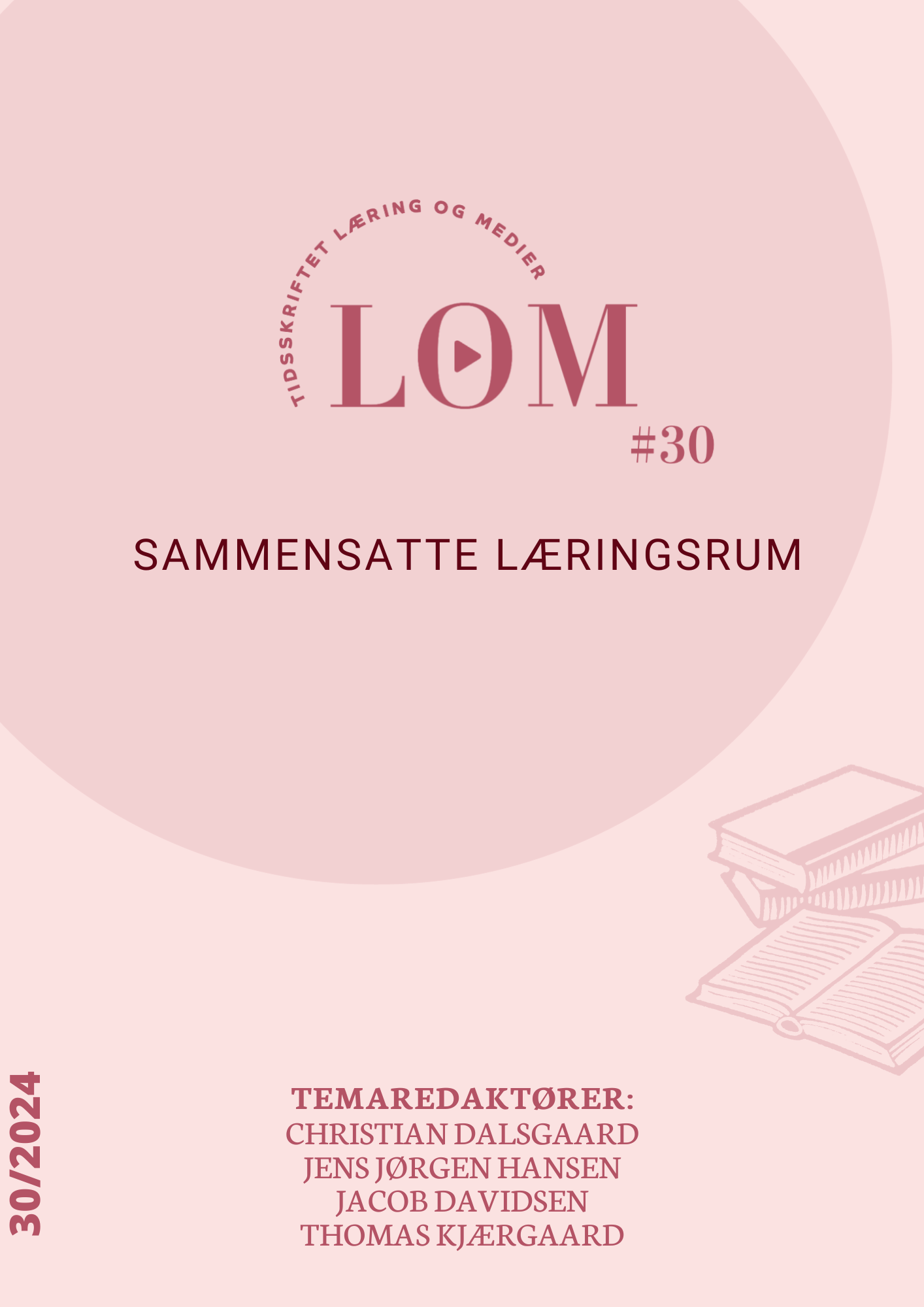Vol. 17 No. 30 (2024): Integrated Learning Spaces

Editor: Christian Dalsgaard, cdalsgaard@edu.au.dk
Editor: Jens Jørgen Hansen, jjh@sdu.dk
Editor: Jacob Davidsen, jdavidsen@ikp.aau.dk
Guest editor: Thomas Kjærgaard, TMK@ucn.dk
New forms of integrated learning spaces and teaching methods are beginning to become a reality at many educational institutions. In recent years, the post-digital perspective has gained ground in the field of using digital technologies in education. The post-digital perspective does not separate the digital as something distinct but rather considers it as part of the infrastructure of education. At the same time, the post-digital perspective challenges the mantra of "pedagogy first," as it does not prioritize either the digital or pedagogy. Instead, it views pedagogy and technology as interwoven, and this interweaving can contribute to the creation of entirely new educational formats, teaching methods, and study practices.
In this special issue of the Learning and Media Journal, we aim to focus on how new forms of learning spaces transform (and have transformed) teaching practices and students' practices through the composition and integration of various technologies and spaces. This special issue is concerned with integrated educational formats, teaching methods, and students' integrated study practices, inviting articles on education, teaching, and learning.
This special issue asks whether the post-digital perspective is correct. Can we avoid doing the pedagogically same and instead move pedagogy to new places through the integration of digital technologies into new formats? And how?
In this context, the special issue is particularly interested in studies of examples of pedagogical innovation in practice. What are the educational potentials in new integrated formats, study practices, and forms of collaboration? Can we finally move beyond whether something is "digital" or not and start focusing on how to develop new forms of education that enhance student learning, address new target groups, etc.? Such considerations also entail rethinking what learning spaces are and beginning to develop new understandings of learning spaces.
The special issue subscribes to a broad understanding of integrated learning spaces, which can include synchronous hybrid classroom teaching, blended courses, students' working and collaboration methods, and more.

